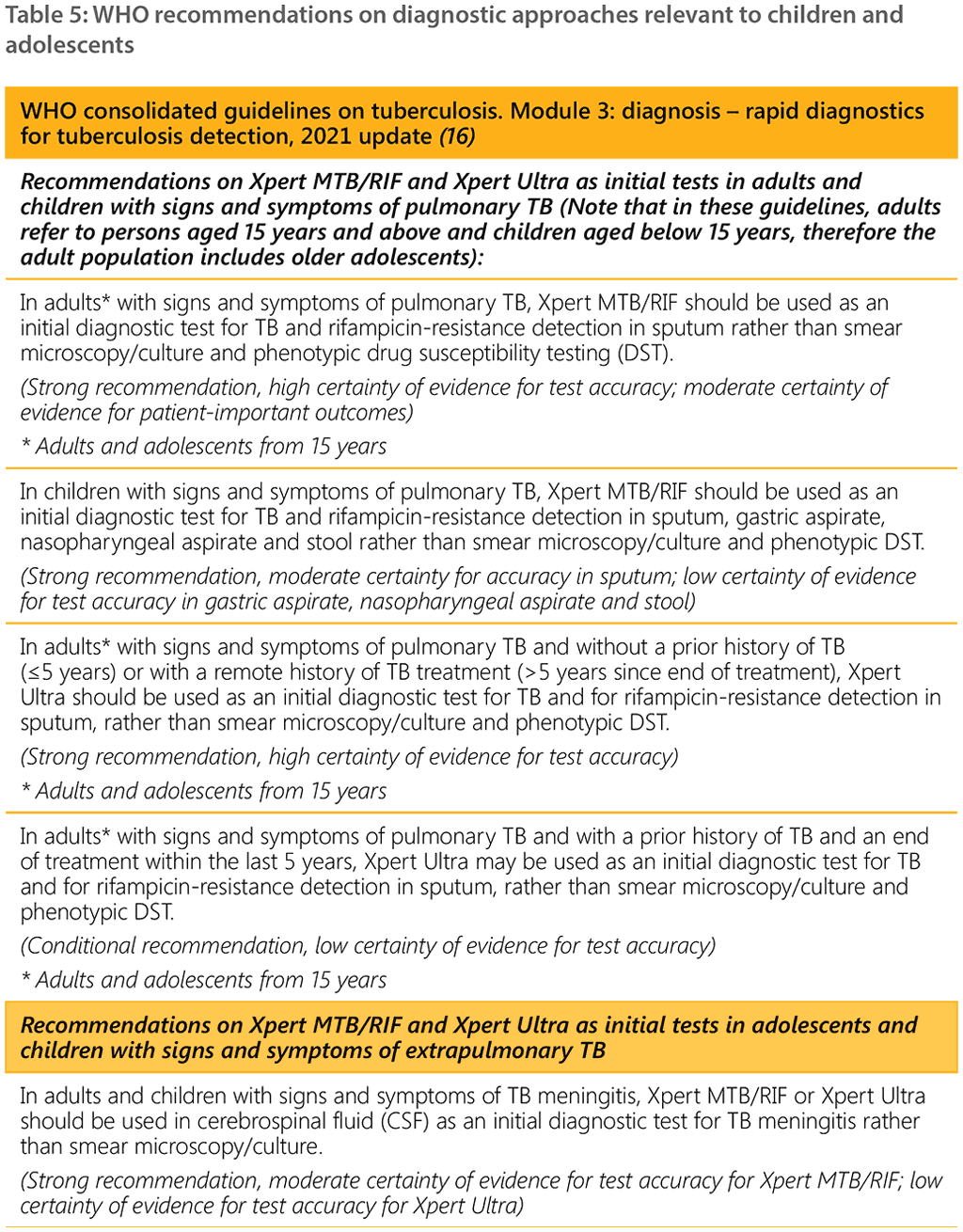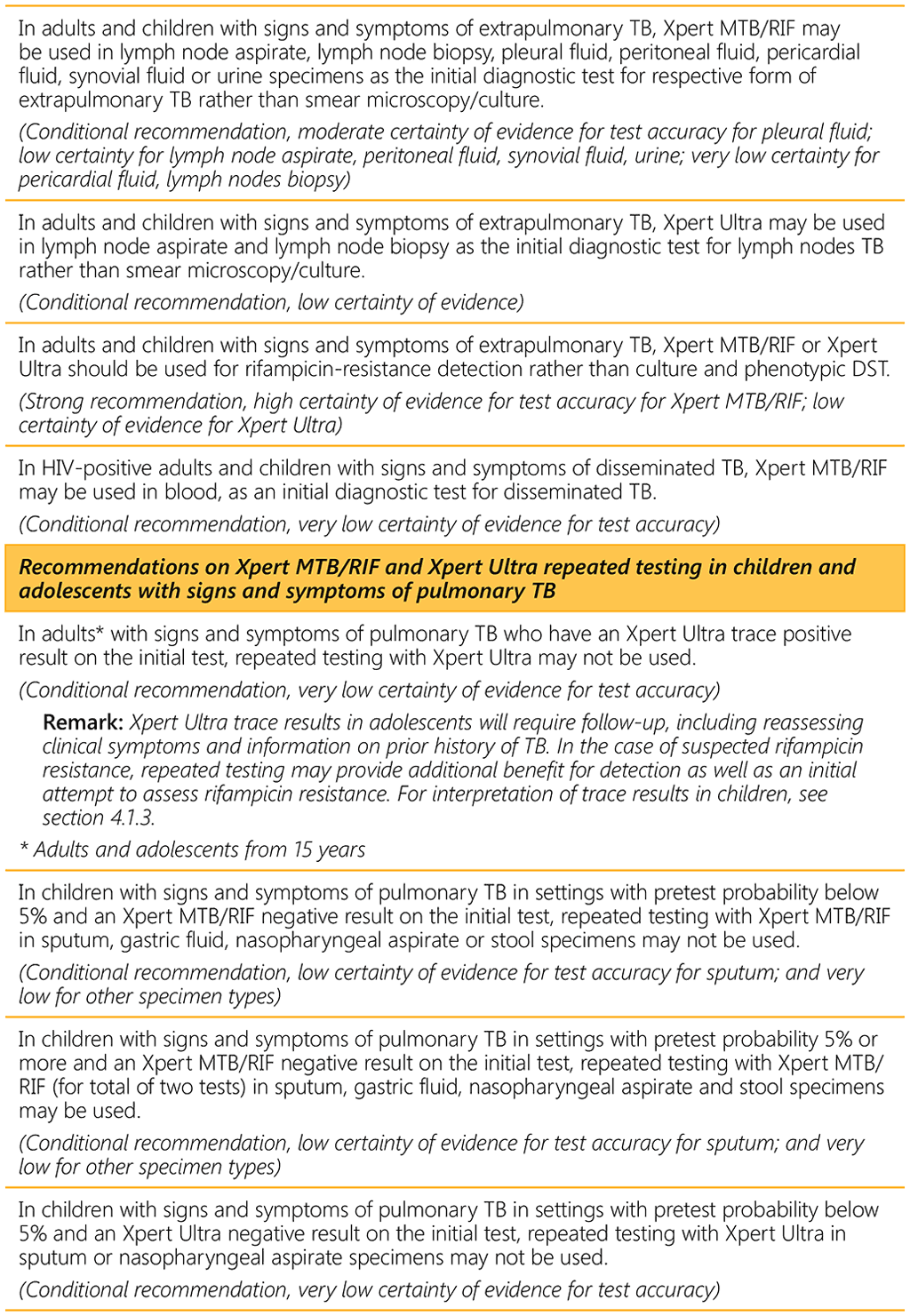5.2.1. Justification and evidence
Following M. tuberculosis infection, young children are at high risk of developing the most severe forms of the disease, of which the most devastating form is TBM. This predominantly affects young children with a peak age of onset of 2-4 years (2). Up to 15% of childhood TB may present as TBM (62); with a decreasing incidence of bacterial meningitis attributed to other causes, TB is the leading cause of bacterial meningitis in many settings (63).
 Feedback
Feedback
